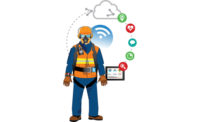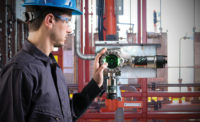The cost of careless gas detection
We’re talking about fines, neglected equipment, no maintenance & possible loss of life

Debt is a general concept that we all seem to understand from a financial perspective. Likely most have incurred or are currently incurring some form of financial debt -- for example, a car payment, mortgage, or a student loan. We can leverage this concept to get something now that we need and agree to pay back later. But should we fail to properly manage this debt, we may end up arguing with a tow truck driver on the street, or dealing with aggressive debt collectors.
To understand the concept of gas detection debt, we need to first define and then elaborate on the consequences of not managing it.
What is gas detection debt?
First off, gas detection debt is not your monthly service payment or bill for the physical gas detectors; that is financial debt.
Gas detection debt is the implied cost of not properly maintaining your fleet and leveraging the data outputs. When the amount of debt is exposed/owed, it is usually paid for in the form of high legal fees, a regulatory fine, lost future work, and in some tragic cases, human suffering. Companies that invest time in regular maintenance and reviews of their data (alarms and exposures) to create a safer workplace have very little to no gas detection debt.
But companies that incur high compounding gas detection debt usually do so through ignorance, indifference, or general lack of effort. Companies can go years with massive gas detection debt and suffer little to no consequence.
A common debt scenario
Allow me to explain a common scenario. Company A has 100 gas detectors in its fleet and it has had zero incidents related to gas detection in the last four years. Plus, they have saved over 40 percent in the last two years for their safety budget. It doesn’t sound like they have a lot of debt, and with no incidents and spending less, they must be doing something right.
But the underlying daily activities tell a different story. They spend ZERO time doing any type of maintenance on their gas detection program, (bump tests as recommended by the manufacturer and calibrations as are recommended by the manufacturer and/or OSHA). Also, they have no idea how these monitors are being used; 20 percent of the users are routinely in high gas concentrations for large periods of time. Others stopped working months ago and remain in the trucks.
While the company has been creating a “financial surplus,” unbeknownst to them, the firm has have been racking up gas detection debt at a rate akin to a teenager with their first credit card. Let me be clear; sometimes gas detection bills never show up, and unlike our teenager we can charge, charge, charge! And because we don’t see those bills, we assume the only form of gas detection debt is our initial financial obligation. However, as any company who has had to pay their gas detection debt would tell you, it is real. A flippant approach means financial, legal, and life issues that you just don’t want to deal with.
A recent example
While there are many examples of companies having to pay their gas detection debt, here is one recent example from January, 2019.
“OSHA inspectors determined that the company exposed employees to a hazardous atmosphere, failed to train employees on the health hazards of hydrogen sulfide, and did not drain water from the trench. The company faces penalties of $422,006.”
In the grand scheme of things, investing in a properly maintained gas detection program is pennies, if not micro pennies, on the dollar when compared to racking up gas detection debt.
Calculating your debt
To quantify the amount of gas detection debt that your company has, I have created a few simple questions to be your guide:
- Do you know? Do you know how many working gas detectors you have? Have they been regularly calibrated, and do you have a bump test policy/program in place? If you answered yes, good job, but we aren’t handing out gold stars just yet. If you answered no, don’t worry, you aren’t alone. In my 15 years in gas detection, many clients who I’ve meet with for the first-time struggle to answer these questions.
- How are they being used? If your first answer is “to sense gas,” touché. However, let me prepare you for my counter. While many companies equip their employees with the hope that gas detectors will be used to “sense gas” in the name of safety, the data tells a different story.
Often, they aren’t used at all. Other times they are routinely placed in places they aren’t supposed to be to “see what would happen.” Or they are used but the user tends to ignore the alarms altogether creating a dangerous and copied pattern of behavior.
This is likely a far more humbling and troubling question than the first, but that is the point. I have heard far too many stories where upon investigation, the data demonstrates a troubling pattern. Commonly a lack of use, or total misuse, of the monitors which led to the incident. - Are you managing it in a cost-effective manner? Financial terms play a big part in a gas detection program. The point of my question is to thoroughly examine if you can achieve a low gas detection debt profile while at the same time streamlining costs throughout your organization. I.e. can a service like iNet® Exchange handle these matters instead of your employees?
- Will they be ready for the moment? I almost forgot the most important question. If an employee wearing a gas detector walks into a hazardous atmosphere, will the monitor accurately alarm so they can evacuate safely? The answer to this question should never be no. But if your gas detection debt is high, it might be so.
Connected Safety
Over the past year you might have been hearing buzz around the industry regarding “Connected Safety” or “Connected Worker.” So what is it and how can I use it to lower my gas detection debt profile?
Connected safety provides a heightened level of awareness by manufacturers creating various communication gateways to get “real time” information from devices to the right people at the right time to make the right decisions. If leveraged properly, this new “Connected” frontier will bring about a dawn of transparency and shed light on your total gas detection debt. In short, answers to the four questions above will be at your fingertips.
Plus, keep in mind that these key insights from a GPS-connected datalogging gas detector can draw strong correlations to other types of behavior/activities throughout your organization. They can bring transparency to other currently shaded areas of your operations. These include, but aren’t limited to, items such as productivity, efficiency, and heat mapping.
Let me caution you about succumbing to a potential divergent thought that might be brewing. It is probably along the lines of, “Well I don’t want to have answers to these four questions or ‘connect’ my gas detectors because then I will have to do something about it… plus I don’t want to spend my budget on that.” Sorry to break it to you, but whether you know about it or you don’t, your gas detection debt is the same.
The correct (but harder) step is to change your mind set and begin to proactively solve these problems and incrementally lower your debt profile. The return on investment (ROI) is a no brainer if your organization is willing to devote time and money. Don’t succumb to the mental trap of short-term safety "savings" that will likely compound your existing gas detection debt.
Sources
Looking for a reprint of this article?
From high-res PDFs to custom plaques, order your copy today!






